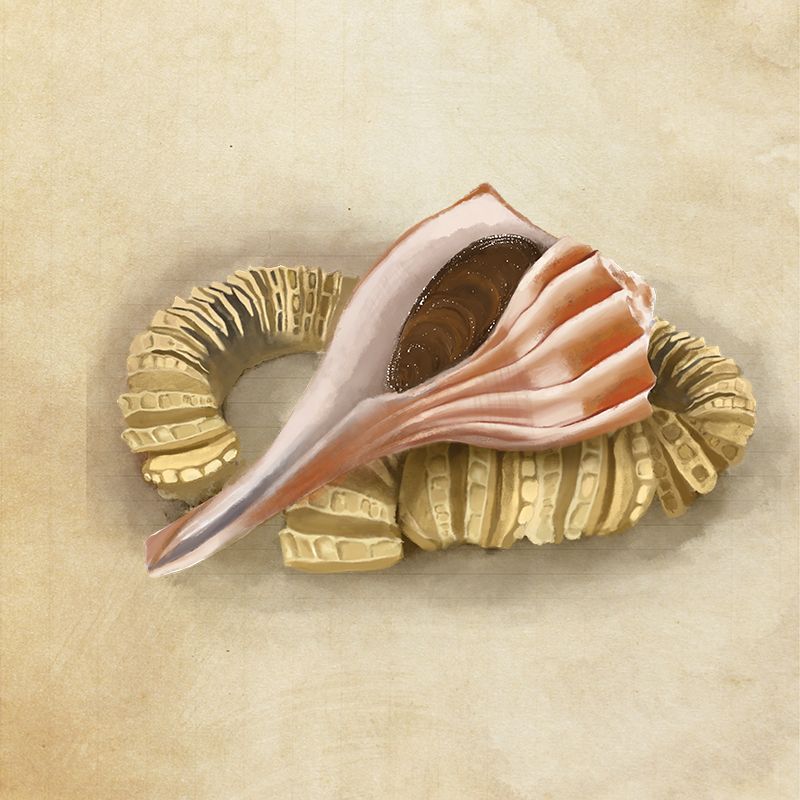Named for the richly colored zigzag pattern resembling lightning bolts on the shells of juveniles, the lightning whelk (Busycon contrarium) is a familiar beachcombing find on Lowcountry shores

This marine gastropod is intriguing because, unlike other conchs and whelks, the lightning whelk is left-handed, meaning its opening is always on the left, or sinistral, side of the shell. Read on to discover more about its significance
MISTAKEN IDENTITY Whelks can grow up to 15 inches long and sometimes are mistaken for conchs. But there are differences—most notably whelks are carnivores (the lightning whelk prefers bivalves, especially clams), while conchs are herbivores. Mature lightning whelks vary in color from grayish white to tan and creamy yellow, with openings that can be bright yellow, orange, or deep red.
SNAIL’S PACE The lightning whelk is a marine snail, or “gastropod,” which comes from the Latin words gastro (stomach) and pod (foot)—in other words, its stomach and foot are contained in the same body part. Like other snails, they use their muscular foot to move as well as to hold prey. The appendage is so strong, it can easily pry open a clam shell.
HISTORIC USE Whelks were used extensively by early Native Americans as a major food source as well as for making tools, beads, and ornaments. Because of their left-sided opening, lightning whelks were particularly significant to tribal beliefs and rituals. The clockwise spirals of the inner shell signified the movement from light to darkness and birth to death.
OPEN & SHUT When the snail retreats into its shell, a hard “trap door” called an “operculum” closes the opening tight for protection. Made from calcium carbonate (as is the shell itself), the panel contains a protein called “conchiolin,” similar to the keratin that makes up animal horns and toenails. If you find a shell with the operculum in place, the animal inside is alive. Return it to the water. Collecting should be reserved for empty shells.
FRESH AIR Whelks breathe through a siphon, a long tube-like organ that brings in oxygenated water. The siphon also allows the gastropod to burrow in the ocean floor and continue to get the oxygen it needs to live. Their prime habitats are ocean shallows, estuaries, creeks, and bays.
VALUABLE JEWELS Whelks lay eggs in a long, spiral, snake-like strand of casings. Nicknamed “mermaid’s necklaces,” a single string of eggs can contain up to 200 off-white pouches, each holding up to 99 eggs in an embryonic fluid, which nourishes the tiny whelks as they develop. Although the female whelk anchors one end of the casing on the ocean floor, they occasionally break free in stormy weather.
HUNGER GAMES While lightning whelks favor dining on bivalves, or hinged shells with two sides such as clams (an adult eats about one clam a month), they also eat other marine animals that share their habitat—worms, crustaceans, and even other whelks. Keen hunters, they use a tongue-like organ made of cartilage called a “radula,” which has rows of tiny sharp teeth, to drill a hole into the shells of their prey.